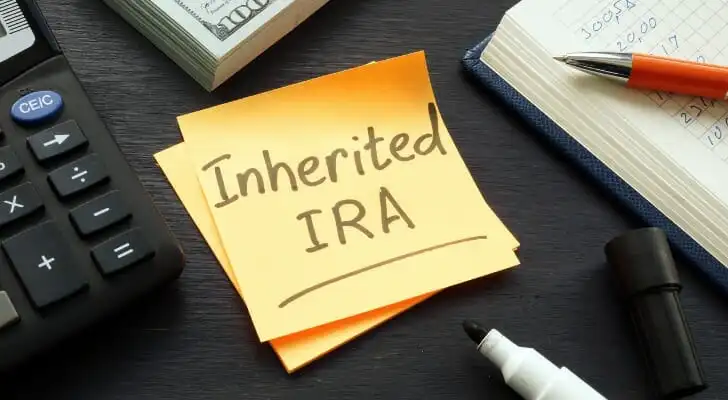A designated beneficiary is an individual or entity chosen to inherit assets from a retirement account, such as an IRA or 401(k), after the account holder’s death. Under the SECURE Act, eligible designated beneficiaries include surviving spouses, minor children of the account holder, disabled or chronically ill individuals, and those who are less than 10 years younger than the decedent. These beneficiaries may have extended withdrawal options compared to other beneficiaries, allowing for more favorable tax treatment.
Managing tax-advantaged accounts in retirement can be complex, which is why consulting a financial advisor may help optimize your assets.
What Is an Eligible Designated Beneficiary?
The Setting Every Community Up for Retirement Enhancement (SECURE) Act signed into law in December 2019 made a number of changes to rules on retirement withdrawals. One change ended the longstanding rule that allowed most people who inherited IRAs to take withdrawals at a rate calculated to empty the account over their expected lifespan. However, the SECURE Act allows some individuals, designated as eligible designated beneficiaries, to continue the previous practice.
The law also created two other categories of beneficiaries. Designated beneficiaries are beneficiaries who weren’t married to the deceased IRA owner and don’t otherwise meet the qualifications for eligible designated beneficiaries. Starting in 2020, designated beneficiaries had to take all the assets from inherited retirement accounts within 10 years. Previously, they were able to use the life expectancy distribution schedule.
The third new class of beneficiaries, non-designated beneficiaries, are trusts, estates, charities and other organizations that do not have a life expectancy like an individual beneficiary. They have to follow the same 10-year distribution rules as a designated beneficiary.
Who Qualifies as an Eligible Designated Beneficiary?

The SECURE Act recognizes five types of eligible designated beneficiaries. Lawmakers recognized that because of their special situations, these people might require long-lasting support from inherited IRAs. So, the law makes them exceptions to the rule requiring distribution of inherited IRA assets within 10 years. These are the five categories of eligible designated beneficiaries and the rules that apply to each.
1. Surviving Spouses
A spouse who inherits an IRA from a deceased partner can still choose to roll the IRA into their own IRA. Then, the surviving spouse can start taking normal distributions at age 59 ½ or wait until age 73, when required minimum distributions (RMDs) based on their expected lifespan must begin. The surviving spouse can elect to roll the inherited IRA into their own retirement account at any time.
2. Disabled Individuals
A beneficiary who meets the IRS definition of disability can take distributions based on their life expectancy, providing a longer withdrawal period. This exception ensures that individuals with disabilities can maintain financial stability while managing their long-term care and medical expenses. Proof of disability, as defined by the IRS, may be required to qualify.
3. Chronically Ill Individuals
Individuals classified as chronically ill under IRS guidelines also qualify as EDBs. This generally includes those who are unable to perform at least two activities of daily living without assistance, such as eating, bathing, or dressing. The ability to stretch distributions over their lifetime helps preserve financial resources for ongoing healthcare needs.
4. Minor Children
Initially, a child of the original IRA owner who is under 18 can take distributions using the life expectancy standard. However, when they reach the age of majority, the 10-year rule takes effect. This means that all the assets of the IRA will be distributed by the time the beneficiary is 28 years old.
5. Non-Spouses Less Than 10 Years Younger
A non-spouse beneficiary who is no more than ten years younger than the account holder—such as a sibling or close relative—can take RMDs based on their own life expectancy. This extended withdrawal period provides tax advantages, preventing a large lump-sum distribution that could push them into a higher tax bracket.
Penalties and Strategies
Failing to withdraw inherited IRA funds within the required timeframe can result in significant penalties. The IRS imposes an excess accumulation penalty tax of 25% on any undistributed assets that should have been withdrawn under the 10-year rule. If the mistake is corrected within two years, the penalty is reduced to 10%. This can lead to substantial financial consequences, especially if the inherited account is large and distributions are delayed.
To mitigate tax burdens, beneficiaries can employ strategic withdrawal planning. Eligible designated beneficiaries may stretch distributions over their life expectancy, reducing annual taxable income. For those subject to the ten-year rule, spreading withdrawals over multiple years rather than taking a lump sum can help manage tax brackets.
Additionally, Roth conversions can be considered before inheritance to provide tax-free distributions for heirs. Careful estate planning, including coordinating taxable and tax-advantaged assets among beneficiaries, can also help optimize the financial impact of inherited IRAs.
Bottom Line
Eligible designated beneficiaries are people who inherited IRAs and, because of their special characteristics, don’t have to take out all the money from the IRA within 10 years of receiving it. Instead, they can stretch distributions over their expected lifespans, which can help them manage taxes. Eligible designated beneficiaries include surviving spouses, chronically ill or disabled individuals, minor children of the original account owner, as well as non-spouses who are at least 10 years younger than the owner. All others who inherit IRAs must take regular distributions that empty the accounts within 10 years.
Tips on Estate Planning
- Whether you are selecting beneficiaries of your own IRA or are an IRA beneficiary who may potentially be an eligible designated beneficiary, you need up-to-date knowledge of IRS regulations and the tax consequences. That’s where a financial advisor can be vital. Finding one doesn’t have to be hard. SmartAsset’s free tool matches you with vetted financial advisors who serve your area, and you can have a free introductory call with your advisor matches to decide which one you feel is right for you. If you’re ready to find an advisor who can help you achieve your financial goals, get started now.
- It’s not unusual to have both an IRA and a 401(k) to your name. In the end, utilizing both types of accounts can only improve your chances of reaching a comfortable retirement. Check out SmartAsset’s 401(k) calculator and guide to employer 401(k) matching.
Photo credit: ©iStock.com/designer491, ©iStock.com/PamelaJoeMcFarlane, ©iStock.com/FatCamera
